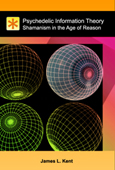
References
Thalamocortical afferents in rat transiently express high-affinity serotonin uptake sites
Bennett-Clarke CA, Chiaia NL, Rhoades RW; Brain Research Volume 733, Issue 2, 16 September 1996, Pages 301-306
Autoradiographic techniques using [3H]citalopram were employed in 8-day-old (P-8) and adult rats to delineate the distribution of high-affinity serotonin (5-HT) uptake sites in the cerebral cortex. In the postnatal rats, [3H]citalopram binding sites were densely distributed in the lower portion of layer III, lamina IV, and upper layer V in the primary visual, somatosensory, and auditory cortices. In the primary somatosensory cortex, these binding sites were arrayed in a manner exactly matching the representation of the body surface as demonstrated by other methods such as staining for cytochrome oxidase (CO) or acetylcholinesterase (AChE). In adult rats, there was no differential distribution of [3H]citalopram binding sites in the cerebral cortex. Neonatal administration of the 5-HT neurotoxin, 5,7-dihydroxytryptamine (5,7-DHT), resulted in a nearly complete destruction of the 5-HT innervation of the cortex on P-8, but the patterned distribution of [3H]citalopram binding sites remained visible. In contrast, thalamic lesions carried out on P-4 caused a complete loss of the patterned distribution of [3H]citalopram binding sites in rats killed on either P-5 or P-8. These results are consistent with the conclusion that thalamocortical afferents in postnatal rats transiently express high-affinity uptake sites for 5-HT and thus may accumulate this amine.
Web Resource: dx.doi.org
